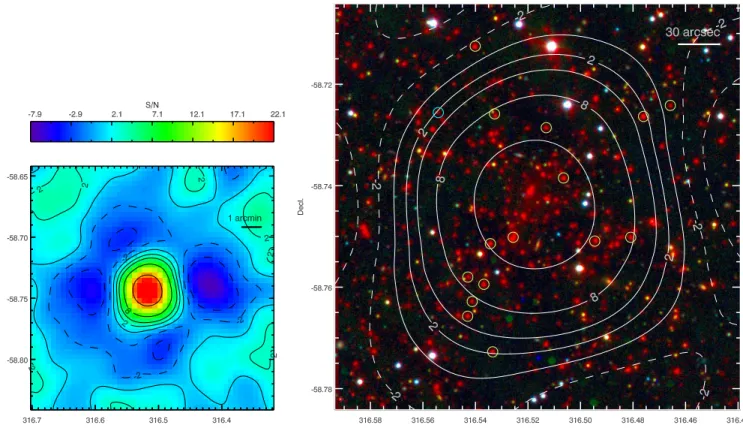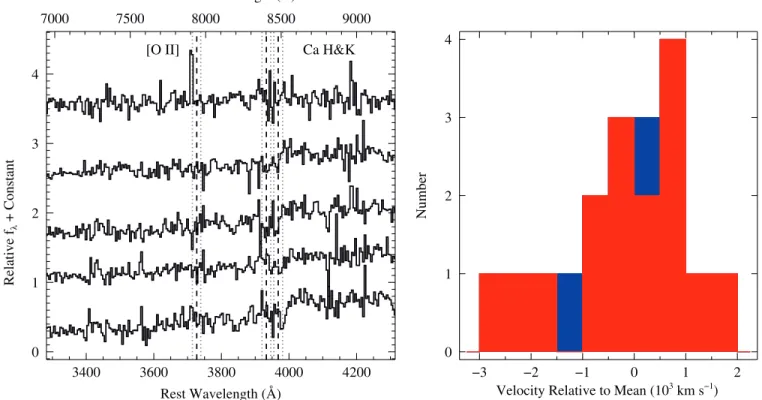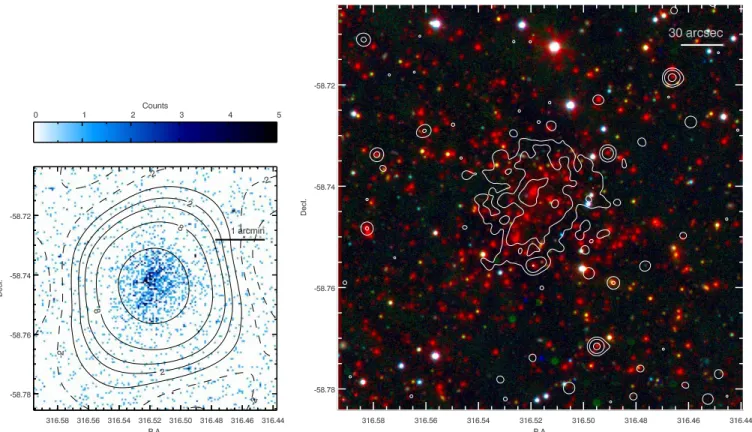Discovery and cosmological implications of SPT CL J2106 5844, the most massive known cluster at Z > 1
Texto completo
Figure

![Figure 2. Color–magnitude diagram (J − [3.6] vs. [3.6]) for galaxies within the IRAC FOV](https://thumb-us.123doks.com/thumbv2/123dok_es/7276523.441873/4.918.69.439.82.332/figure-color-magnitude-diagram-j-galaxies-irac-fov.webp)


Documento similar
It is well known that chromosomal inversions in natural populations of the species Drosophila subobscura are adaptations to changes in the environment.. It has been observed
In order to calculate penetrations in DP tests (as well as in SPT tests), it is necessary to use ENTHRU cone instead of ENTHRU, as the energy that really produces penetration is
We aim at identifying the least massive population of the solar metallicity, young (120 Myr), nearby (133.5 pc) Pleiades star cluster with the ultimate goal of understanding
E) Given that the ANO-RCC basis sets are used for Yb and Cl in the defect cluster, the Sr 4s and 4p embedded ion orthogonalization functions are combined with 4 s-type and 3 p-type
Figures 4 and 5 show the expected and observed 95% CL upper limits for the product of the production cross section times branching fraction of hypothesized resonances that decay into
In order to provide a more quantitative estimate of the relative probability of observationally detecting such massive clusters at the indicated redshifts we used n( > M, z) –
Clearly for our choice of cosmological parameters, haloes at these mass scales are more massive in strongly coupled cosmolo- gies but can have similar masses in cosmologies with
The state vector of the CL/B model is x CL/B = (x, y, φ, v, ω, a, c 0 , c 1 ), which represent the east, north, velocity angle, velocity, yaw rate of turn, and acceleration in